PRE-RELEASE
Windscreen wiper with rain sensor, detailed description
| Windscreen wiper with rain sensor, detailed description |
The windscreen wiper assembly is located under the cover beneath the windscreen. The wipers are controlled by the stalk-switch to the right of the steering column.
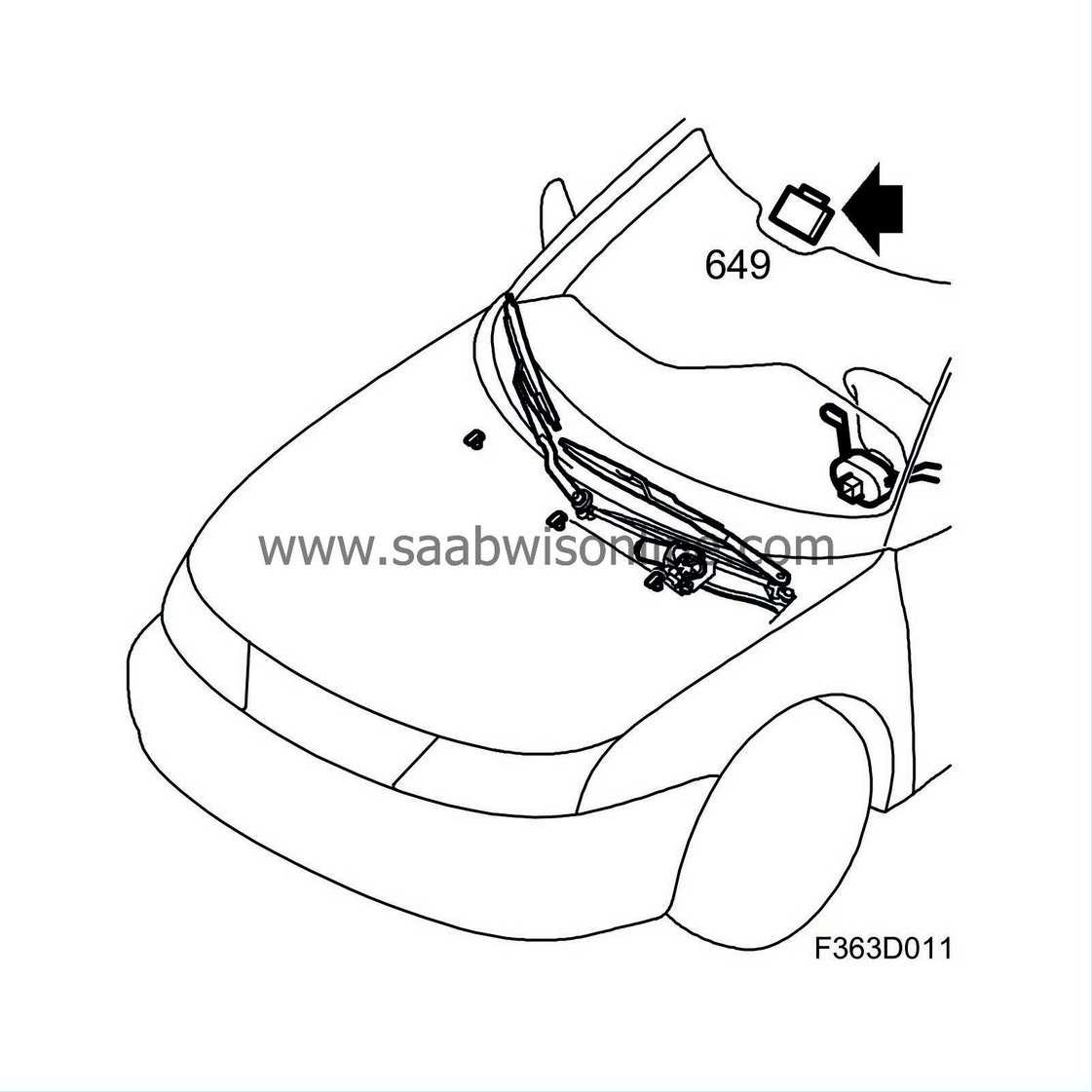
The function is controlled by a rain sensor in conjunction with the electrical centres in the boot and the engine compartment. The windscreen wipers have two speeds (high/low) and an automatic mode. There are three alternative levels of sensitivity for the rain sensor which can be selected by means of the SID control panel (SIDC). The rain sensor is placed on the inside of the windscreen forward of the inside rearview mirror.
The wiper stalk-switch selection positions:
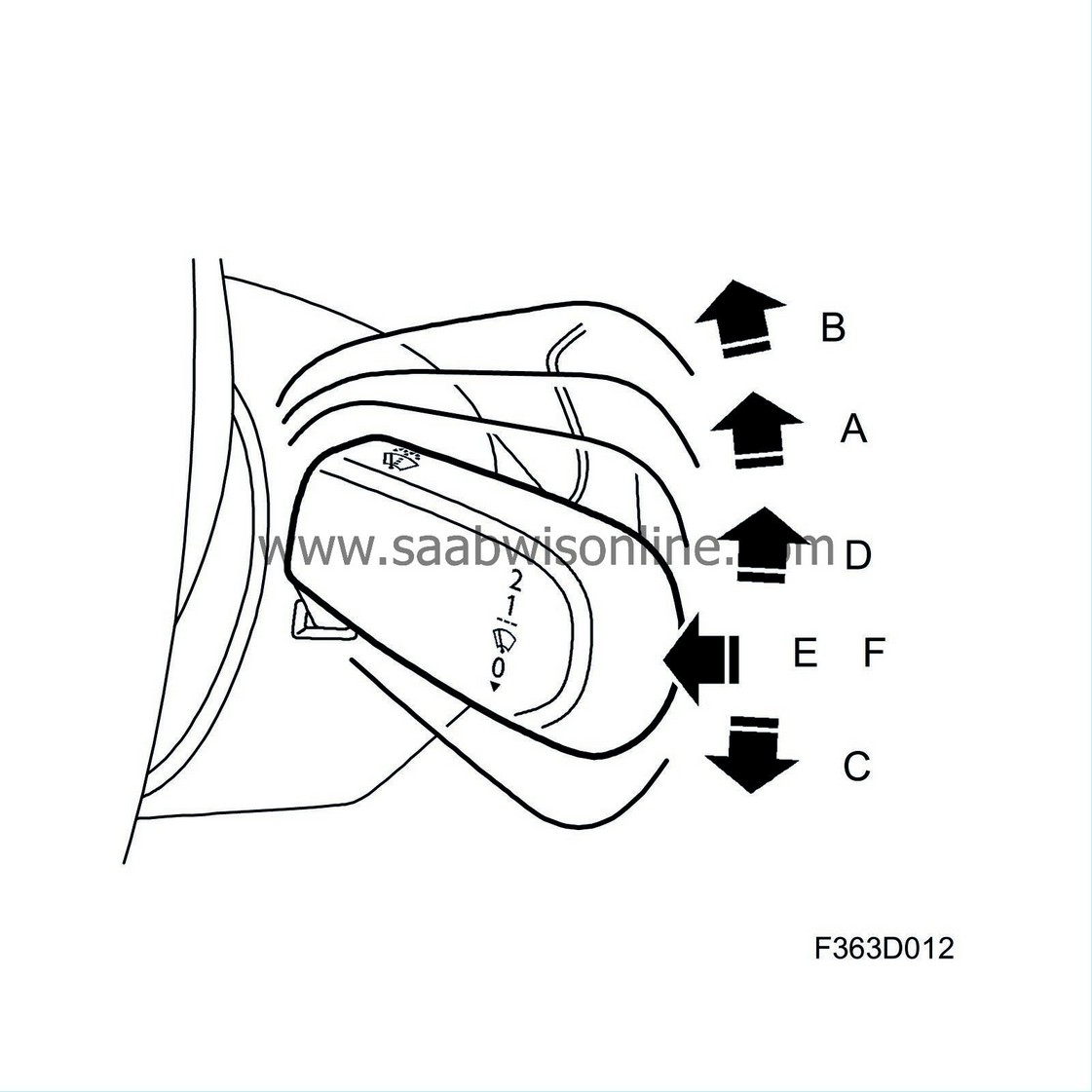
| A. |
Low speed
|
|
| B. |
High speed
|
|
| C. |
Single stroke/service position.
|
|
| D. |
Automatic
|
|
| E. |
Washing
|
|
| F. |
Wipers parked
|
|
The wiper stalk-switch (61) is integrated with the CIM (703). The CIM transmits a message on the bus giving the position of the stalk-switch. Windscreen wiping is only possible when the ignition switch is in either the OFF or the ON position.
| Low speed (A) |
When low speed is selected on the wiper stalk-switch the CIM (703) transmits a "Windscreen wiper, stalk-switch, position LOW SPEED" message on the bus. The message is processed by the UEC (342) which activates relay 83 and the wiper motor (62F) is connected to the voltage supply. The UEC (342) supplies B+ on pin 30(F) which is connected to pin 4 on the wiper motor (62F). Pin 3 on the wiper motor is connected to ground. If the ignition is switched off when the wiper blades are not in the parking position the UEC (342) continues to run the motor until the parking position is reached.
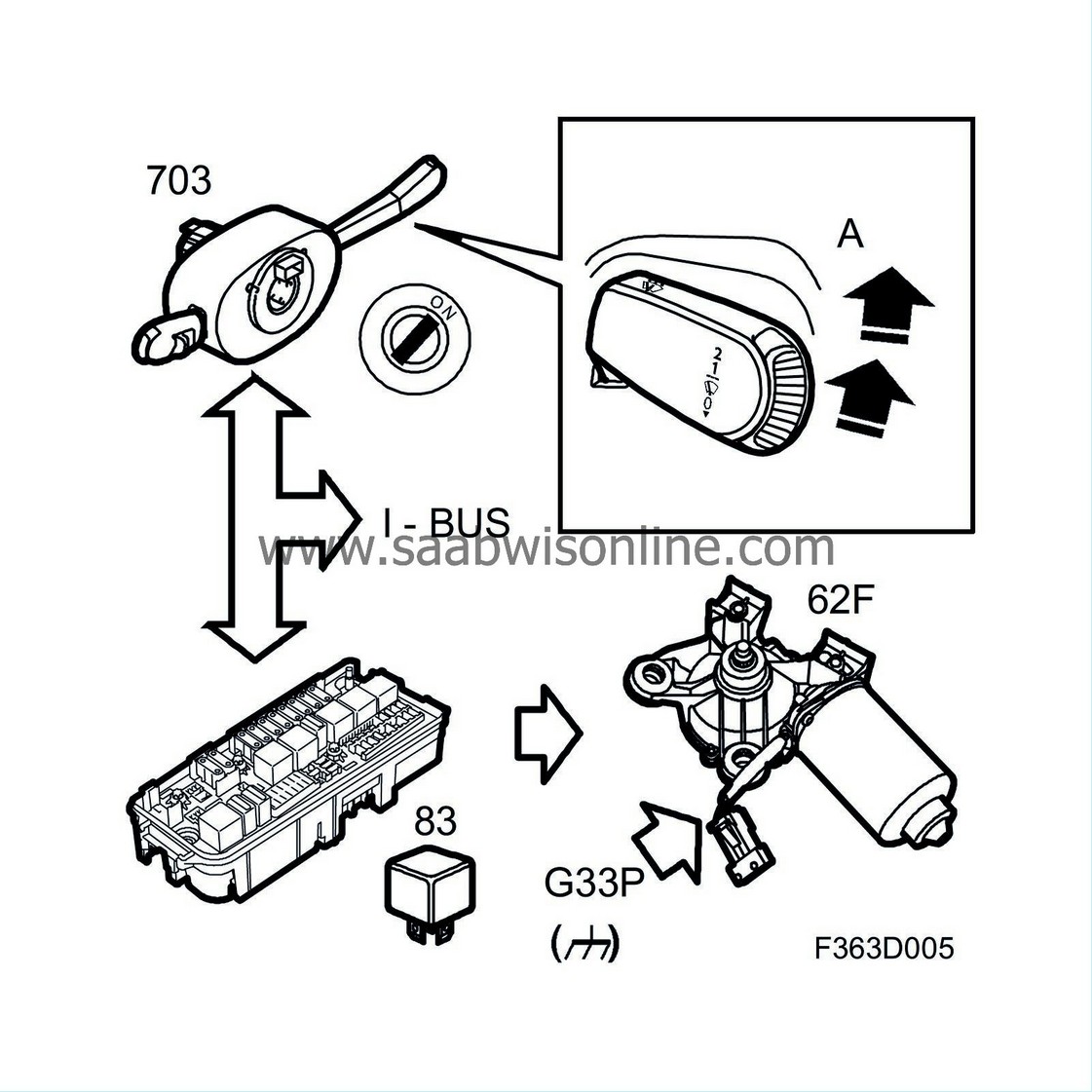
| High speed (B) |
When high speed is selected on the wiper stalk-switch the CIM (703) transmits a "Windscreen wiper, stalk-switch, position HIGH SPEED" message on the bus. The message is processed by the UEC (342) which activates relays 83 and 709 and the wiper motor (62F) is connected to the voltage supply. The UEC (342) supplies B+ on pin 29 (F) which is connected to pin 1 on the wiper motor (62F). Pin 3 on the wiper motor is connected to ground. If the ignition is switched off when the wiper blades are not in the parking position the UEC (342) continues to run the motor until the parking position is reached.
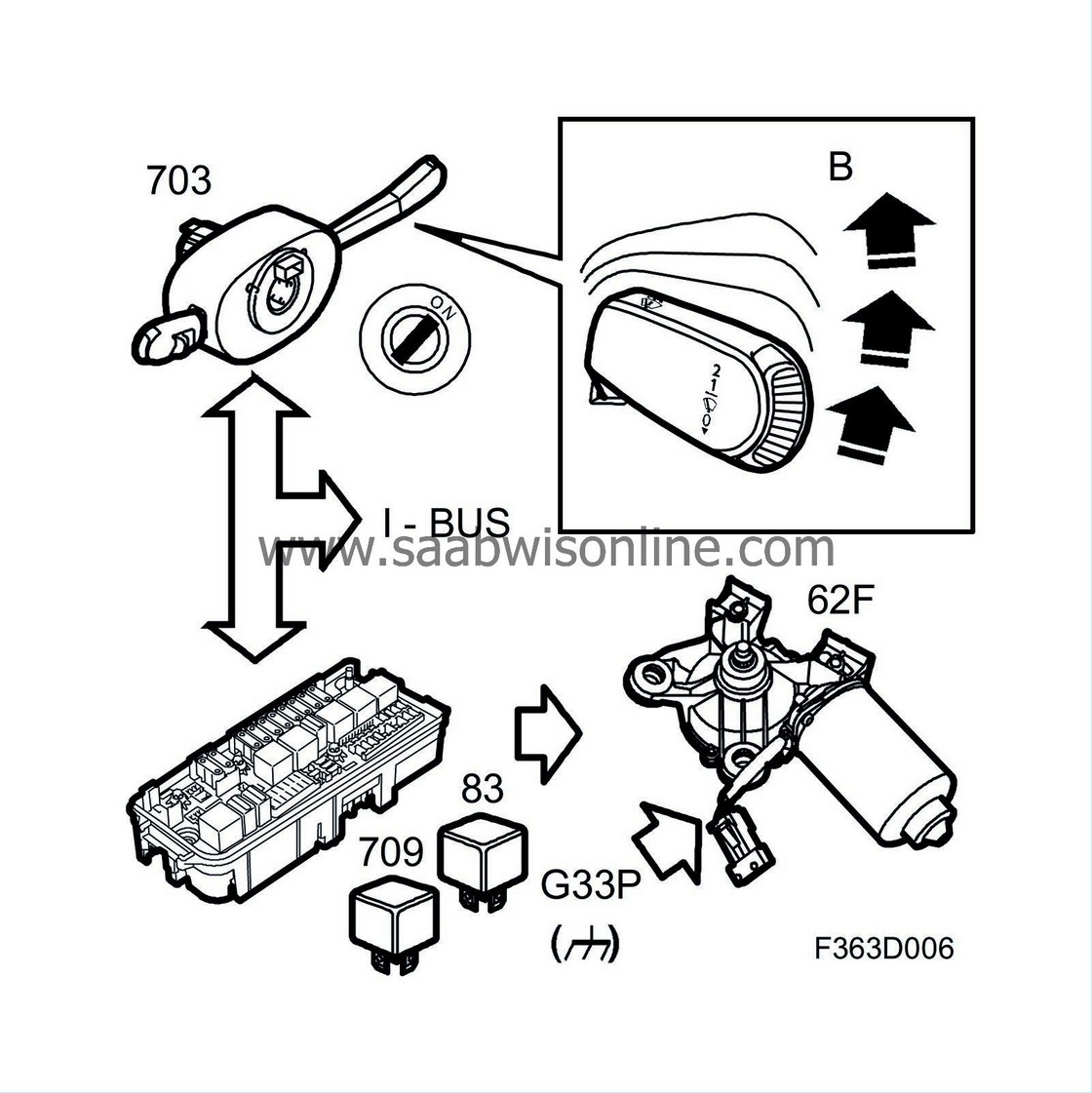
| Single stroke and service position (C) |
Single stroke
When the windscreen wiper stalk-switch is moved to the spring-loaded, single stroke position, the CIM (703) transmits the bus message "Windscreen wiper, stalk-switch, SPRING-LOADED POSITION", on condition that the ignition is ON. The message is processed by the UEC (342) which activates relay 83 and the wiper motor (62F) is connected to the voltage supply. The UEC (342) supplies B+ on pin 30(F) which is connected to pin 4 on the wiper motor (62F). Pin 3 on the wiper motor is connected to ground.
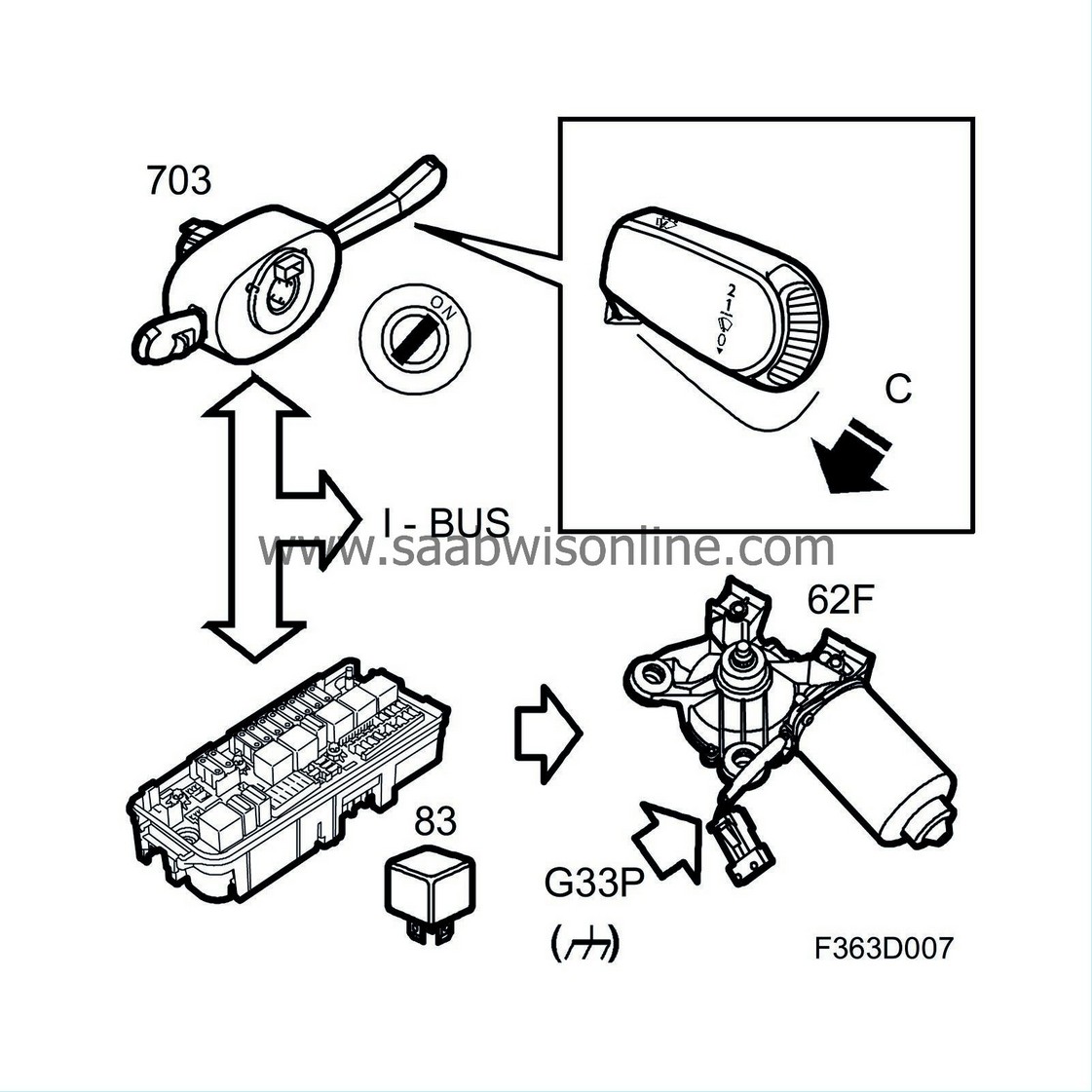
Service position
When the windscreen wiper stalk-switch is moved to the spring-loaded, single stroke position, the CIM (703) transmits the bus message "Windscreen wiper, stalk-switch, SPRING-LOADED POSITION", on condition that the ignition is in the OFF or LOCK position. The VEC(342) activates the wiper motor so long as the stalk-switch remains in the single stroke position but for no more than one stroke.
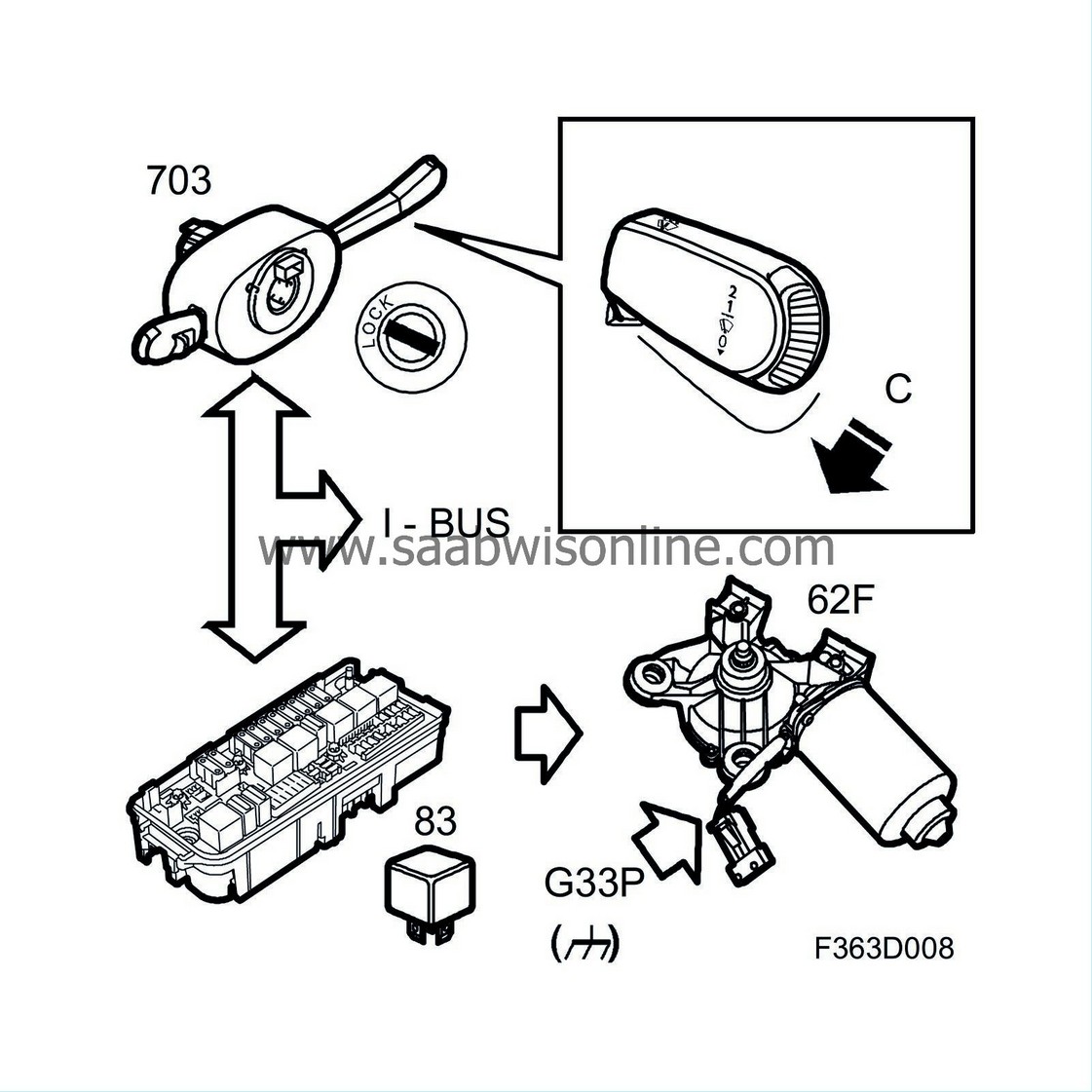
This function is only possible if the spring-loaded position is selected within 16 seconds of the ignition having been switched off. Subsequent activation is possible so long as the VEC(342) is awake, normally for a period of 8 minutes.
| Automatic (D) |
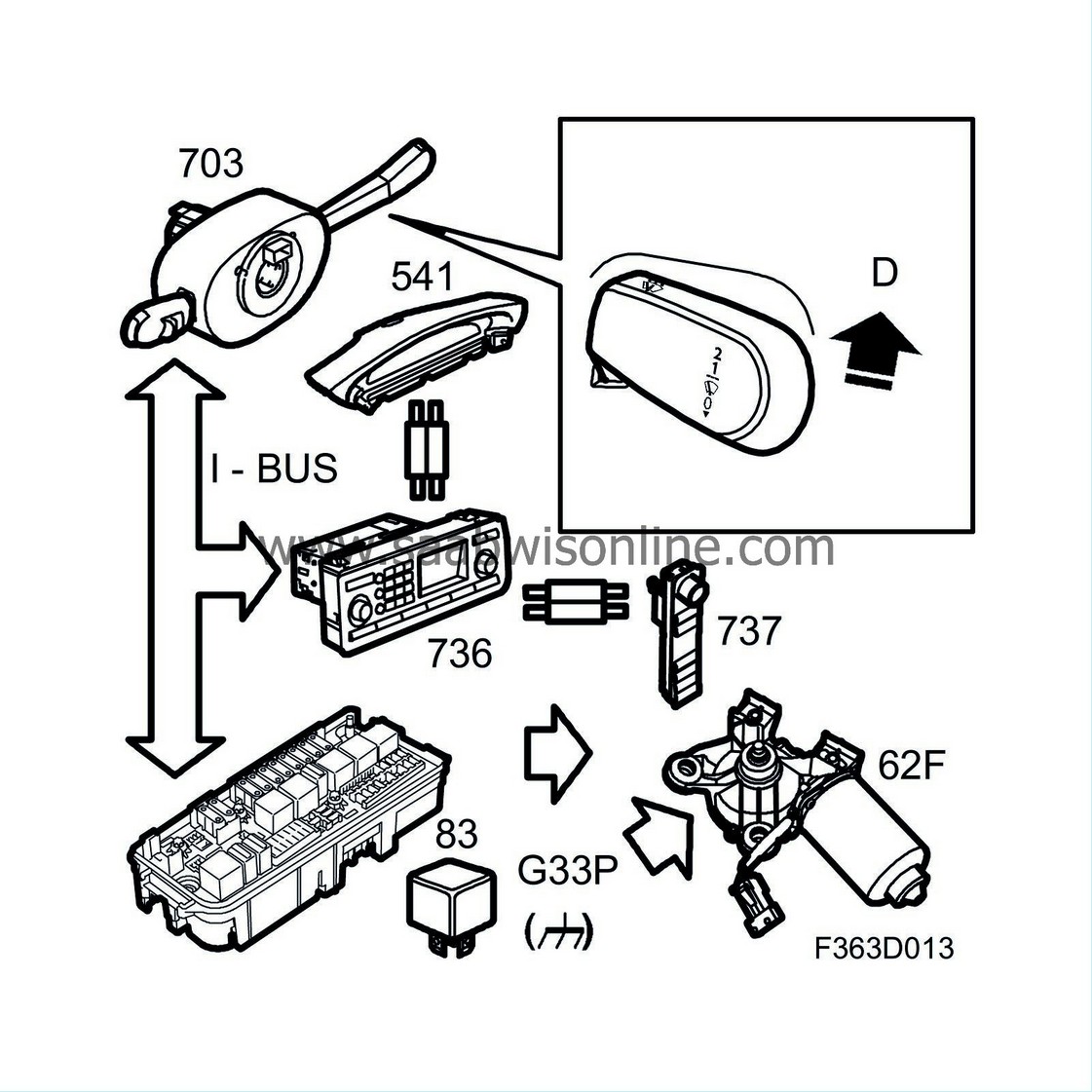
When the windscreen wiper stalk-switch is moved to the spring-loaded, single stroke position, the CIM (703) transmits the bus message "Windscreen wiper, stalk-switch, INTERMITTENT", on condition that the ignition is ON. Information from the rain sensor determines whether the UEC (342) activates the wipers at high or low speed.
| End position contact. |
The wiper motor has an inbuilt contact which serves to protect the motor if the wiper blades are obstructed and is used to establish the wiper parking position and the number of wipe cycles during windscreen washing. The rain sensor uses the end position contact to determine whether new wiping should be started.
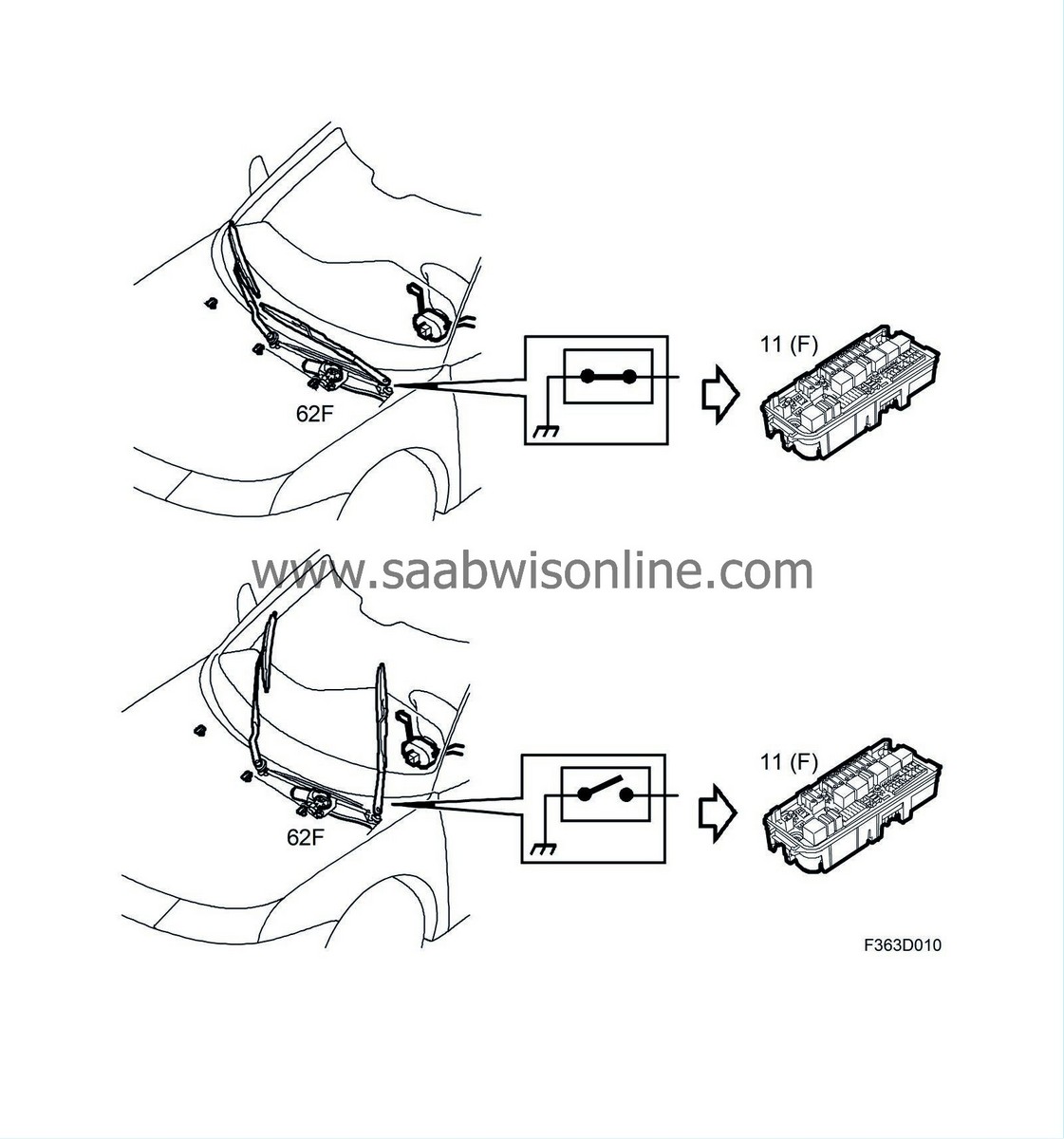
Obstruction protection
If the wiper arms are obstructed the status of the end position contact will not change. If the status is static for more than 20s when the output signal to the wipers is activated, the UEC (342) will then de-activate the signal.
Wipers parked
The end position contact is used to ensure that the wipers park in the correct position. The contact is closed when the wiper mechanism is in the parking position.
The end position contact is also used by UEC (342) to establish the number of wipe cycles when wiping in conjunction with windscreen washing.
The rain sensor uses the end position sensor to determine whether or not to start a new sweep.
The end position contact is connected to the wiper motor pin 2 which is in turn connected to pin 11 (F) on the VEC (342). When the wipers are in the parking position the contact is closed and the UEC pin 11 (F) is thus grounded.
| Function, rain sensor |
The rain sensor is connected to the REC(701) via a C-cable. Information relating to water quantity/rain intensity on the windscreen is transmitted on this communication cable.
When the rain sensor detects water on the windscreen it sends information to the REC(701). The REC transmits a "Rain sensor requests wiper" bus message with one of the following values:
| - |
OFF
|
|
| - |
LOW
|
|
| - |
MEDIUM
|
|
| - |
HIGH
|
|
The value (OFF/LOW/MEDIUM/HIGH) that is sent depends on the amount of water on the windscreen and the sensitivity that is set. The bus message is used by the UEC (342) to activate the windscreen wiper motor. The windscreen wipers can be activated at low speed, high speed or for single sweeps. If the signal from the rain sensor is missing, the UEC initiates continuous wiping.
The rain sensor is activated by moving the stalk switch, located to the right of the steering wheel, to the automatic position, equivalent to the position for intermittent wiping on cars without rain sensor. When the rain sensor is activated, the wipers make a single sweep for reference, partly to calibrate the system when the windscreen is clear and partly to inform the driver that the system has been activated. If the car is started with the stalk switch in the automatic position, the switch must first be moved from this position, then returned to the automatic position for the rain sensor to be activated.
The rain sensor takes over control of the windscreen wiping from the UEC. The system changes between no wiping, single strokes and continuous wiping depending upon how much snow or water is on the windscreen. With diminishing light the sensitivity of the rain sensor increases.
Function under different conditions
| • |
When driving through a tunnel, the wipers pause to quickly be able to switch to high speed if necessary.
|
|
| • |
When a large amount of water flows over the windscreen, e.g. when meeting another vehicle, high speed is activated until the water is gone.
|
|
| • |
If the wiper blades are worn or dirty, a thin film of water can build over the sensor surface. The rain sensor detects this and avoids activating the wipers unnecessarily.
|
|
| • |
When the rain sensor detects that the windscreen is dirty, the windscreen is cleaned before the wipers are activated.
|
|


